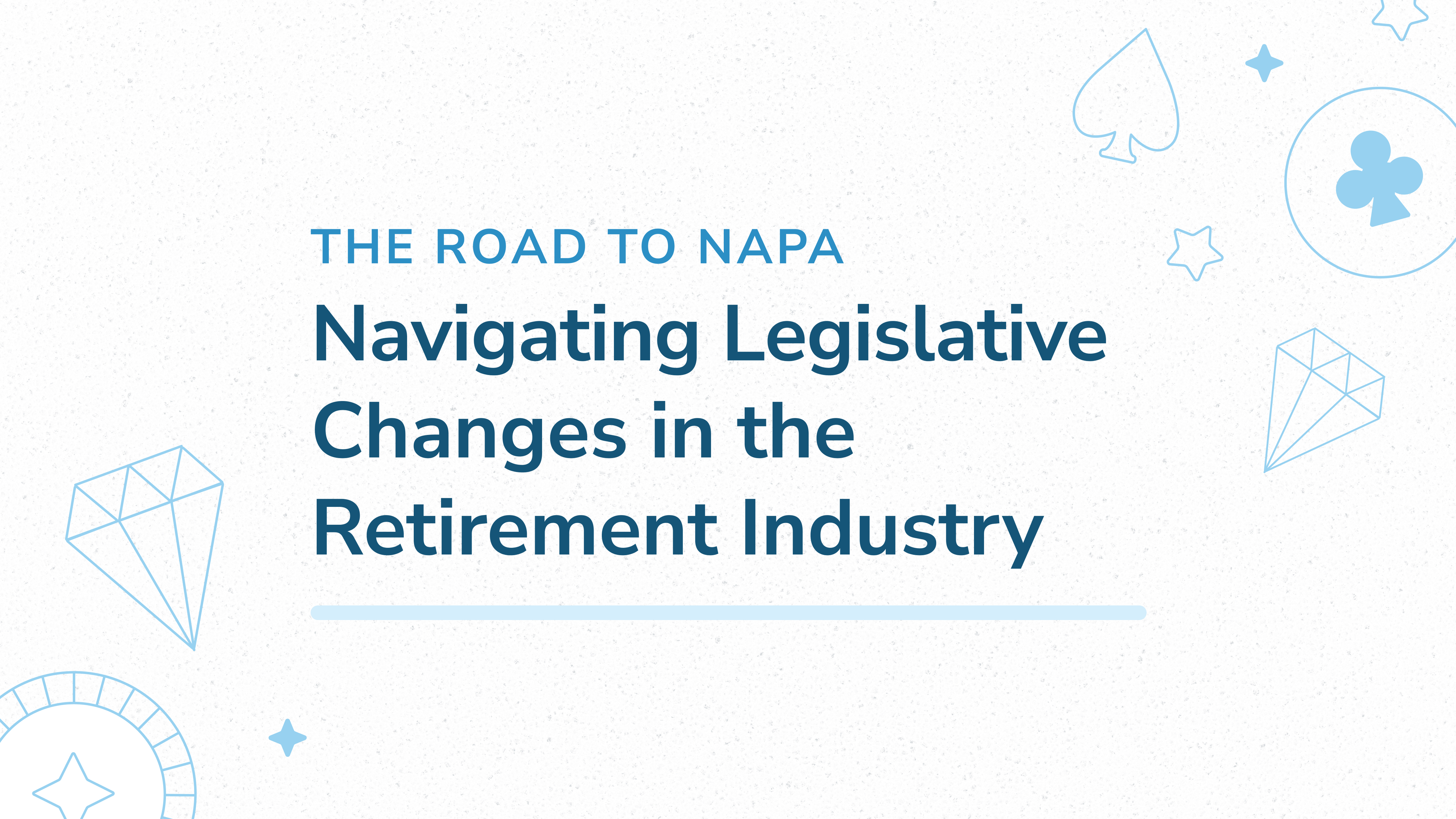The Road to NAPA: Navigating Legislative Changes in the Retirement Industry

For 71% of employers, the ever-evolving regulatory and legislative landscape is keeping them up at night.
With NAPA’s 401(k) Summit just around the corner, one thing is certain—retirement plan policy will be a major focus. Changing legislation presents a unique opportunity for advisors to distinguish themselves as trusted experts while also growing managed assets and attracting new clients.
Leading up to this year’s Summit, we’ll be breaking down the industry’s top recent regulatory updates—from SECURE 2.0 to state mandates—and how they are driving growth for advisors.
SECURE 2.0: Where We Stand and What’s Next
SECURE 2.0 legislation has reshaped retirement savings and the industry as a whole, expanding access to workplace plans and driving increased demand across the industry. As more businesses seek to offer retirement benefits, advisors are seeing new opportunities to grow their practices and support clients in navigating these changes.
What’s on the horizon? Even greater demand. With nearly 400,000 new 401(k) plans expected to launch in the coming years, the 12,000 retirement plan advisors currently serving the market are projected to face challenges in meeting this new demand.
Here are the key SECURE 2.0 provisions to brush up on as we head into NAPA’s 401(k) Summit—and the business opportunities they present for advisors:
1. The Auto-Enrollment Requirement
Section 101 of SECURE 2.0 states that in 2025, new 401(k) and 403(b) plans established after December 29, 2022, must automatically enroll all eligible employees at a default contribution rate between 3% and 10% of their salary, unless an alternative rate is selected by the employee.
In addition to auto-enrollment, plans must also automatically escalate contributions by 1% each year until they reach a predetermined rate by the employer, between 10 and 15%. Employees, however, may change their rates at any time.
How Auto-Enrollment Impacts Advisors: Higher participation rates and automatic contribution increases will drive growth in assets under management.
2. Enhanced Tax Credits
Section 102 of SECURE 2.0 increased the tax credits available to certain eligible businesses. Here’s what to know:
- The Startup Credit: The existing start-up credit was increased from covering 50% of qualifying start-up expenses to 100%, with an annual limit of up to $5,000.
- The Auto-Enrollment Credit: Employers who add auto-enrollment to their plan may claim a tax credit of $500 per year for up to three years.
- The Employer Contribution Tax Credit: Businesses may receive tax credits of up to $1,000 per year for contributions made to each eligible employee’s account, for up to five years.
These credits are designed to help businesses offset the costs of setting up retirement plans, making it more affordable for certain employers to offer a quality savings plan to their employees.
By the way, if paid by the employer, this includes advisory fees!
How the Tax Credits Impact Advisors: Offering a retirement plan is more affordable than ever for businesses, increasing demand for advisors.
3. Increased Catch-Up Contributions
Section 109 states that starting this year, individuals aged 60 to 63 can make higher catch-up contributions to their retirement plans.
- If employees are turning anywhere between 60 and 63, they can contribute $11,250 in addition to the normal deferral limit of $23,500.
- For all other savers turning 50 or older, they can contribute $7,500 in addition to the normal deferral limit of $23,500.
How the Catch Up Contributions Impacts Advisors: Expect an increase in assets saved in plans with a greater number of participants aged 60 to 63.
4. Student Loan Matching
Section 110 allows employers to match employees’ student loan payments as if they deferred into their retirement plan. This helps to drive retirement savings for those who are tackling student debt at the same time.
How Student Loan Matching Impacts Advisors: Manage new funds for those who otherwise wouldn’t have participated in their retirement plans due to student loan debt.
State Auto-IRA Programs and the Opportunities They Unlock for Advisors
Another key factor prompting demand for private retirement plans is auto-IRA programs. These state-driven savings initiatives require certain employers to register for the program or offer a qualified retirement plan. Recent research reveals that over 30,000 employers in early-adopter states chose to set up a private plan rather than use the state-facilitated option. Businesses that would not have initially launched a 401(k) plan are turning to advisors to set one up.
As more states introduce mandatory auto-IRA programs, advisors have a unique opportunity to help clients navigate these state-specific program rules or help them set up a qualifying plan. With deadlines rapidly approaching, it's important to stay ahead and help your clients remain compliant.
Legislation Is Driving Growth for Advisors
These legislative shifts have produced an unprecedented surge in demand for workplace savings plans. As businesses navigate these changes, they will increasingly turn to advisors for clarity and guidance. Staying informed and proactive about ongoing policy changes has never been more critical. Partner with a trusted provider to scale your firm and stay ahead of the demand.
We’re looking forward to connecting with advisors and industry professionals at the NAPA 401(k) Summit in Vegas this April to further these discussions around legislation and demand in workplace savings.
Be sure to stop by Booth #311 to meet with the Vestwell team. See you there!